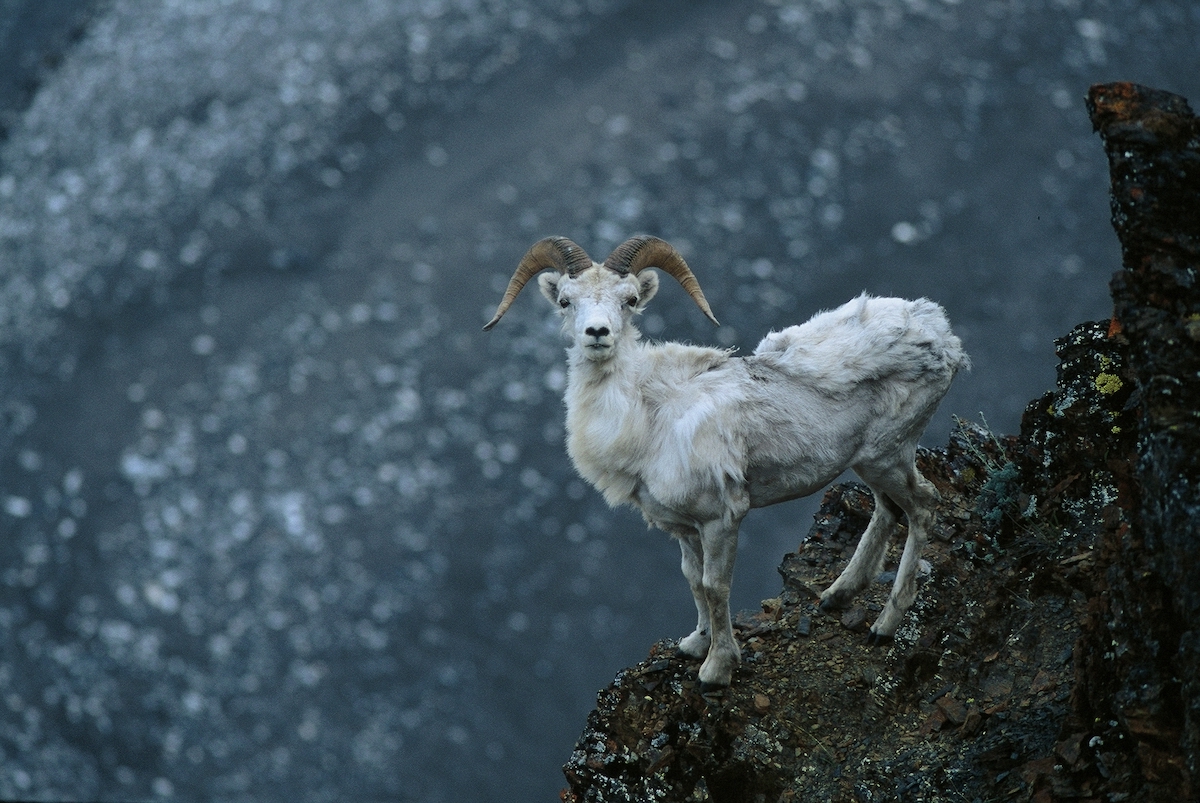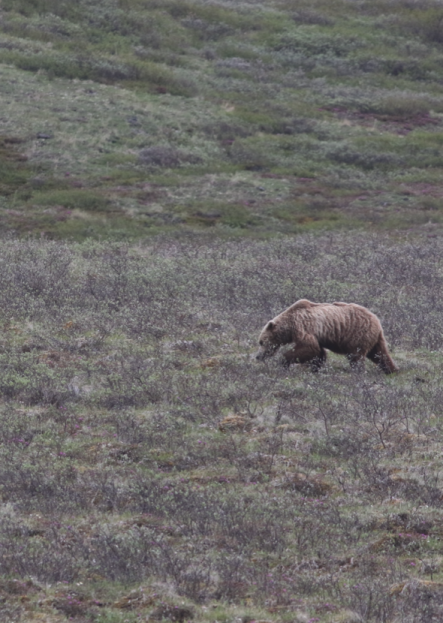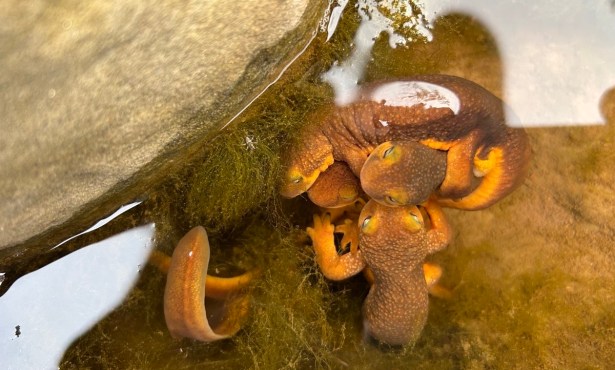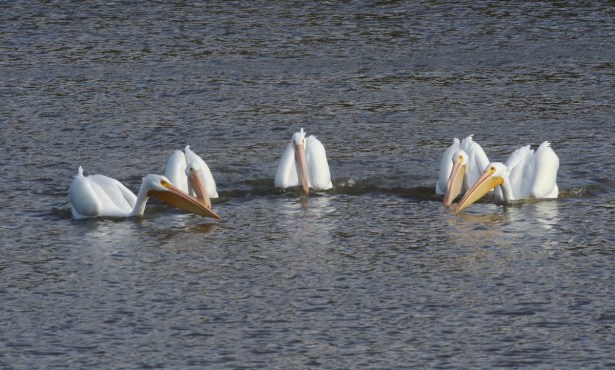A Visit to the Arctic National Wildlife Refuge, America’s Last, Best Place
The Threat of Oil Drilling Still Looms over the Fragile Expanse

They could’ve been small patches of snow, remnants of winter clinging to slopes of the Brooks Range in the Arctic National Wildlife Refuge (ANWR) in northeast Alaska. Instead, it was a herd of 18 Dall sheep grazing a daunting mountain face smothered in peat and wildflowers. I watched them through my binoculars as they traversed into a lichen-covered limestone cathedral towering above the braided Kongakut River.
Rivers on the North Slope of the range flow into the vast Coastal Plain, fortified by gritty barrier islands, the icy Beaufort Sea, and the Arctic Ocean. The Plain spans 1.5 million acres and is the calving grounds of the Porcupine caribou herd, which is 130,000-plus strong and breeds in Western Canada. The herd’s migration route is the longest of any terrestrial mammal on the planet.

The region is also a vital habitat for thousands of nesting shorebirds like red-necked phalaropes, least terns, and dunlin, and during the harsh Arctic winters, ANWR provides important denning sites for polar bears. Among the 43 species of mammals there, musk ox, gray wolves, grizzly bears, Arctic and red foxes, and wolverines thrive.
The refuge encompasses the native lands of the Inupiat in the north and the Gwich’in in the southeast. Native Americans have subsisted in the Arctic for thousands of years, long before it was deemed a wildlife refuge in 1960.
Since 1977, the ANWR has been on a political rollercoaster, dodging advances by oil and gas companies eager to tap into its oil reserves. Estimates range from 7.7 to 11.8 billion barrels beneath the permafrost on the Coastal Plain, also known as “1002 Area.” Due to political pressure, the Plain was left unprotected when the refuge was created, but since 1986, Congress has introduced bills to protect the fragile expanse.
Under the Trump Administration, a provision in the 2017 federal tax bill opened the area to oil and gas leases in 2020 that two small companies quickly took advantage of. But on his very first day in office, President Joe Biden put a temporary halt to drilling.
“NRDC, alongside critical partners among Indigenous peoples and conservation groups, has drawn a line with the Arctic Refuge, and the Biden-Harris Administration understands the stakes,” said Garrett Rose, staff attorney with Natural Resources Defense Council’s Alaska Project. “This is America’s last, best place. If we can’t safeguard the Refuge from extractive industry, then no place in America is safe.”
Currently, the two companies that did secure leases have rolled back their efforts to move forward with oil exploration. The costs of building roads, helipads, and other infrastructure on the Coastal Plain have apparently far outweighed the potential revenue. For now, the Arctic National Wildlife Refuge is safe.
“It is so important that our young people see that we are heard, and that the president acknowledges our voices, our human rights, and our identity,” Bernadette Demientieff, executive director of the Gwich’in Steering Committee, said in a statement.
Rafting downriver, we paralleled a large male grizzly bear along the Kongakut. Its head down, the big bear sauntered along the foothills, foraging for food. I exited the raft and kept pace with him by running along the cobble and making sure to stay downwind. After half a mile, he disappeared over a rolling ridge.
Back in the raft, we paddled farther downriver. After locating a decent campsite, I kept my binoculars on me while I pitched my tent. Anticipating the bear continuing its foraging northward, I scanned for him after each tent stake was pounded into the ground. Sure enough, the 800-pound grizzly found a place to bed down well within sight of my optics.
Light rain fell as dark clouds swirled above the high peaks of the Brooks Range. Sodden by the rain, the grizzly occasionally rolled, yawned, and stretched his legs on a spongy bed of peat moss. There was utter calm across the tundra. Suddenly, without warning, the grizzly awoke and continued his trudge for food into the next river veld. The enormity of the ANWR made him appear small, this phenomenal Arctic biome, the largest, last, great wild place.

Support the Santa Barbara Independent through a long-term or a single contribution.




You must be logged in to post a comment.